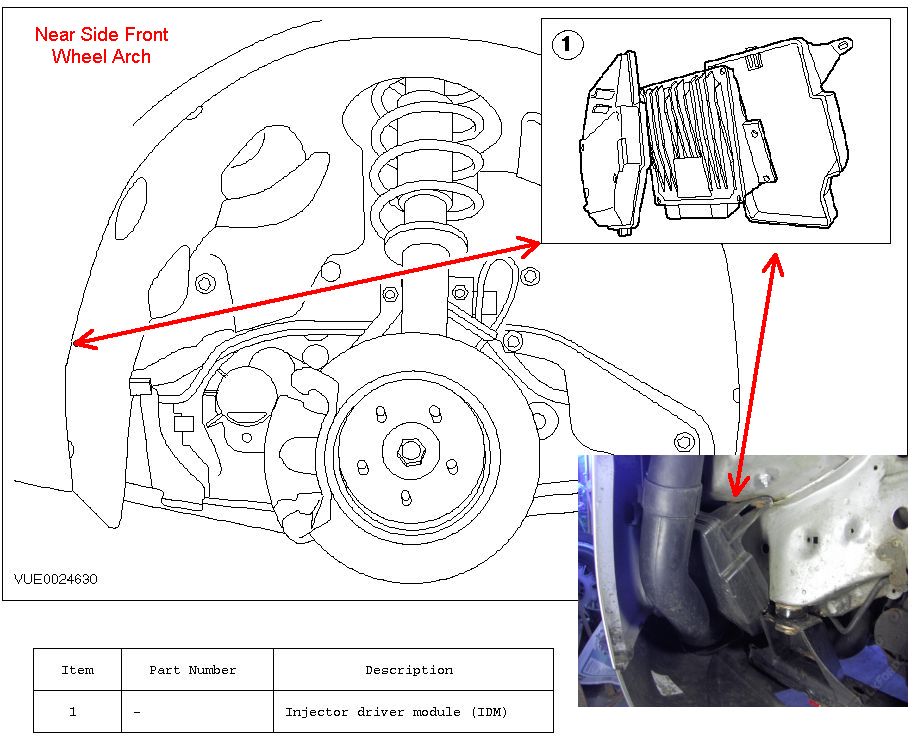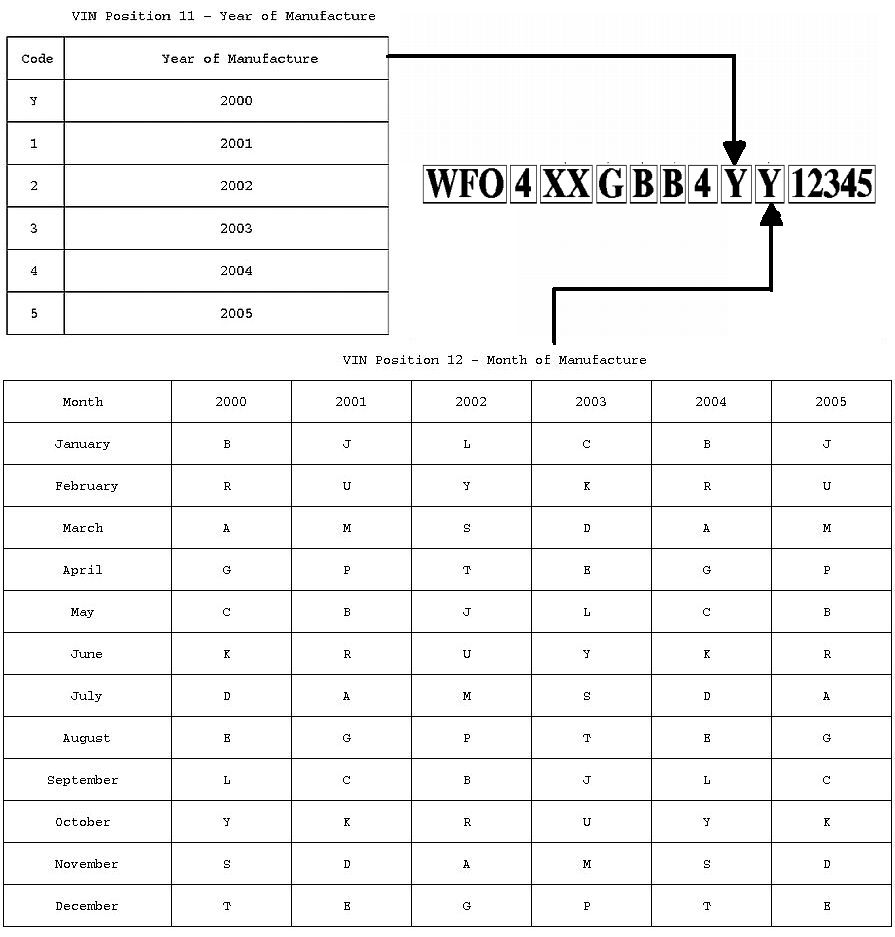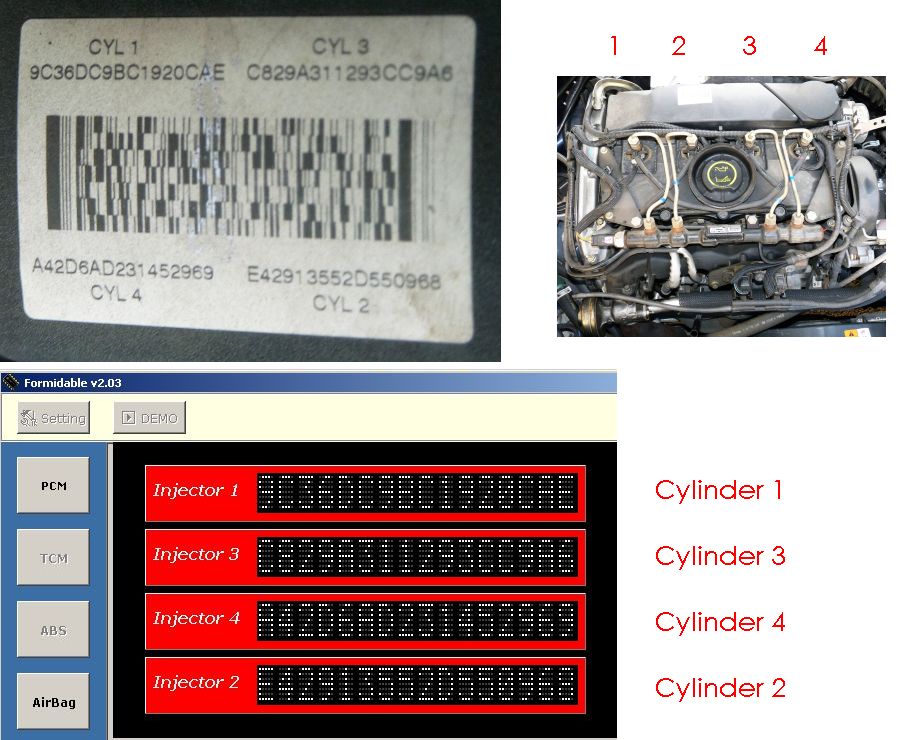Registrations
We now manually approve all new user accounts due to a large influx of spam bots. Accounts are normally approved within 48 hours.
If you need any help with using this Wiki, please ask here: TalkFord.com Wiki Submission Forum
Difference between revisions of "F Super"
Peter scott (Talk | contribs) m |
|||
| (24 intermediate revisions by 2 users not shown) | |||
| Line 1: | Line 1: | ||
| + | ---- | ||
| + | {{Infobox | ||
| + | |name = F Super / Formidable | ||
| + | |bodystyle = float:right; valign:top; | ||
| + | |image = [[File:Fordwiki infobox.png]] | ||
| + | |imagestyle = | ||
| + | |caption = Overview Guide | ||
| + | |captionstyle = | ||
| + | |headerstyle = background:#ccf; | ||
| + | |labelstyle = background:#ddf; | ||
| + | |datastyle = text-align:right; | ||
| + | |header1 = | ||
| + | |label1 = Ford Model: | ||
| + | |data1 = '''Mondeo_Mk3''' | ||
| + | |||
| + | |header2 = | ||
| + | |label2 = Petrol/Diesel: | ||
| + | |data2 = '''Diesel''' | ||
| + | |header3 = | ||
| + | |label3 = Estimated Cost: | ||
| + | |data3 = '''?''' | ||
| + | |header4 = | ||
| + | |label4 = Difficulty? | ||
| + | |data4 = '''Easy/Medium''' | ||
| + | |label5 = How long does this take? | ||
| + | |data5 = '''?''' | ||
| + | }} | ||
| + | |||
'''The F-Super / Formidable Instruction Manual''' | '''The F-Super / Formidable Instruction Manual''' | ||
| Line 6: | Line 34: | ||
A frequently asked question is '''"Can F-Super re-code my injectors?"''' | A frequently asked question is '''"Can F-Super re-code my injectors?"''' | ||
| − | The | + | The Build Date gives some guidance but Ford appear to spread their changes over many months so dates are very approximate. |
| + | The most conclusive check is to look in the near side front arch after pulling the plastic liner away at the front. The separate ICU looks like this: | ||
| + | [[File:ICU.jpg]] | ||
| − | |||
| − | |||
| − | [[File:Build_Date.jpg]] | + | |
| + | Looking at Build Dates the parts lists suggest the following but this is far from definitive: | ||
| + | |||
| + | Cars with with automatic transmission and build date 15/06/2003 and later (i.e. 3Y) and cars with manual transmission and build date 15/02/2003 and later (i.e. 3K) can have their injector codes written to and read from the PCM by F-Super but earlier cars cannot. | ||
| + | |||
| + | For the Transit the build date is 07/2003 and later (i.e. 3S). | ||
| + | |||
| + | To determine your car's build date check the characters 11 and 12 on your VIN number. | ||
| + | |||
| + | The Transit has a longer VIN code but the year and month codes are still 11 and 12 characters to the right of the W. | ||
| + | |||
| + | [[File:Build_Date 2.jpg]] | ||
| + | |||
| + | |||
| + | |||
| + | |||
| + | '''Identifying and Coding Injectors''' | ||
| + | |||
| + | Notes: | ||
| + | |||
| + | 1.The engine should be stone cold prior to re-coding. At least 8 hours since last run. | ||
| + | |||
| + | 2. The action of writing the codes into the ECU also resets the fuel trim values that the ECU adjusts by listening to the knock sensor mounted on the cylinder block. Each injection normally consists of a small pilot injection followed by the main injection. After recoding, the pilot injection is switched off. This will cause the engine to sound more like an old taxi for about 20 to 30 minutes of running until the ECU readjusts the pilot injections after which it will return to normal. | ||
| + | |||
| + | |||
| + | [[File:Fsuper1.jpg]] | ||
| Line 28: | Line 81: | ||
Boost pressure in psi = ((10xMAP) - BARO) / 6.895 | Boost pressure in psi = ((10xMAP) - BARO) / 6.895 | ||
| − | e.g. If the MAP is reading 23 in F Super we can say that the boost pressure is 230 - 100 = 130 kPa. i.e. 18.85 psi | + | e.g. If the MAP is reading 23 in F Super and BARO is reading 100 we can say that the boost pressure is: |
| + | 230 - 100 = 130 kPa. i.e. 18.85 psi | ||
1 bar = 100 kPa. | 1 bar = 100 kPa. | ||
| Line 34: | Line 88: | ||
1 psi = 6.895 kPa. | 1 psi = 6.895 kPa. | ||
| − | '''Accelerator Position Sensors APP1, APP2, APP3''' | + | '''Accelerator Pedal Position Sensors APP1, APP2, APP3''' |
See: http://articles.d-tips.com/art8.html | See: http://articles.d-tips.com/art8.html | ||
| + | |||
| + | '''Injector Faults''' | ||
| + | |||
| + | Leakage is the main cause of problems. Injectors can leak in two different ways. If there is excessive leakage through the injector valve then this makes it impossible for the injection pump to achieve or maintain the pressure in the common rail that the ECU demands. When this happens the ECU will restrict performance or shut the engine down and record a DTC error such as P1211 indicating a failure to achieve correct pressure. | ||
| + | |||
| + | This type of leakage is detected by a Leak-Off Test. See: https://www.fordwiki.co.uk/index.php?title=Injector_Leak-Off_Test | ||
| + | |||
| + | The other form of leakage is past the needle. In this case the fuel leaks into the cylinder when it shouldn't. The effect of this leakage is to cause firing too early or of greater magnitude than desired. The ECU will detect this when the knock sensor shows excessive knock. When this happens the engine will be put into limp mode and one or more of the following DTCs will be recorded. | ||
| + | |||
| + | P2336 Cylinder #1 Above Knock Threshold | ||
| + | |||
| + | P2337 Cylinder #2 Above Knock Threshold | ||
| + | |||
| + | P2338 Cylinder #3 Above Knock Threshold | ||
| + | |||
| + | P2339 Cylinder #4 Above Knock Threshold | ||
| + | |||
| + | If leakage of either type is caused by wear then the only cure is the replacement of the complete injector, however it is possible that leakage can be caused by carbon build-up at in the tip or by contamination by other forms of dirt, in this case it may be possible to repair the injector by cleaning. See: [TDCi Injector Cleaning] https://www.fordwiki.co.uk/index.php?title=Injector_Cleaning | ||
| + | |||
| + | [[Category:Mondeo_Mk3]] | ||
| + | [[Category:Mondeo_Mk4]] | ||
| + | [[Category:Focus_Mk1]] | ||
| + | [[Category:Focus_Mk2]] | ||
| + | [[Category:Focus_Mk3]] | ||
| + | [[Category:S-Max_Mk1]] | ||
| + | [[Category:C-Max_Mk1]] | ||
| + | [[Category:C-Max_Mk2]] | ||
| + | [[Category:C-Max_Mk1]] | ||
| + | [[Category:Galaxy_Mk2]] | ||
| + | [[Category:Galaxy_Mk3]] | ||
| + | [[Category:Fiesta_Mk6]] | ||
| + | [[Category:Fiesta_Mk7]] | ||
| + | [[Category:Transit_Connect]] | ||
| + | [[Category:Transit_Mk6]] | ||
Latest revision as of 07:25, 7 February 2015
|
Overview Guide | |
| Ford Model: | Mondeo_Mk3 |
|---|---|
| Petrol/Diesel: | Diesel |
| Estimated Cost: | ? |
| Difficulty? | Easy/Medium |
| How long does this take? | ? |
The F-Super / Formidable Instruction Manual
File:F Super Formidable Manual.pdf
A frequently asked question is "Can F-Super re-code my injectors?"
The Build Date gives some guidance but Ford appear to spread their changes over many months so dates are very approximate.
The most conclusive check is to look in the near side front arch after pulling the plastic liner away at the front. The separate ICU looks like this:

Looking at Build Dates the parts lists suggest the following but this is far from definitive:
Cars with with automatic transmission and build date 15/06/2003 and later (i.e. 3Y) and cars with manual transmission and build date 15/02/2003 and later (i.e. 3K) can have their injector codes written to and read from the PCM by F-Super but earlier cars cannot.
For the Transit the build date is 07/2003 and later (i.e. 3S).
To determine your car's build date check the characters 11 and 12 on your VIN number.
The Transit has a longer VIN code but the year and month codes are still 11 and 12 characters to the right of the W.
Identifying and Coding Injectors
Notes:
1.The engine should be stone cold prior to re-coding. At least 8 hours since last run.
2. The action of writing the codes into the ECU also resets the fuel trim values that the ECU adjusts by listening to the knock sensor mounted on the cylinder block. Each injection normally consists of a small pilot injection followed by the main injection. After recoding, the pilot injection is switched off. This will cause the engine to sound more like an old taxi for about 20 to 30 minutes of running until the ECU readjusts the pilot injections after which it will return to normal.
MAP, BARO and Boost Pressure
F Super is very good but the Live Data screen has some problems with the stated units:
MAP has units of kPA but the actual values shown in the F Super window need to be multiplied by 10 to be correct. (e.g. At rest the MAP should just read atmospheric pressure which is about 100 kPa but F Super reads 10 kPa)
Likewise the BARO reading in F Super should normally read about 1000 mb (millibars) but actually displays about 100 mb.
So, if you wanted to know what your Boost Pressure was:
Boost pressure in psi = ((10xMAP) - BARO) / 6.895
e.g. If the MAP is reading 23 in F Super and BARO is reading 100 we can say that the boost pressure is:
230 - 100 = 130 kPa. i.e. 18.85 psi
1 bar = 100 kPa.
1 psi = 6.895 kPa.
Accelerator Pedal Position Sensors APP1, APP2, APP3
See: http://articles.d-tips.com/art8.html
Injector Faults
Leakage is the main cause of problems. Injectors can leak in two different ways. If there is excessive leakage through the injector valve then this makes it impossible for the injection pump to achieve or maintain the pressure in the common rail that the ECU demands. When this happens the ECU will restrict performance or shut the engine down and record a DTC error such as P1211 indicating a failure to achieve correct pressure.
This type of leakage is detected by a Leak-Off Test. See: https://www.fordwiki.co.uk/index.php?title=Injector_Leak-Off_Test
The other form of leakage is past the needle. In this case the fuel leaks into the cylinder when it shouldn't. The effect of this leakage is to cause firing too early or of greater magnitude than desired. The ECU will detect this when the knock sensor shows excessive knock. When this happens the engine will be put into limp mode and one or more of the following DTCs will be recorded.
P2336 Cylinder #1 Above Knock Threshold
P2337 Cylinder #2 Above Knock Threshold
P2338 Cylinder #3 Above Knock Threshold
P2339 Cylinder #4 Above Knock Threshold
If leakage of either type is caused by wear then the only cure is the replacement of the complete injector, however it is possible that leakage can be caused by carbon build-up at in the tip or by contamination by other forms of dirt, in this case it may be possible to repair the injector by cleaning. See: [TDCi Injector Cleaning] https://www.fordwiki.co.uk/index.php?title=Injector_Cleaning


 Your Privacy Choices
Your Privacy Choices